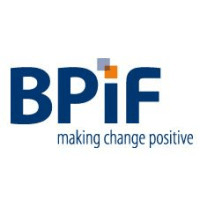In the summer of 2016 as part of the ‘No Wonder You Love Paper’ campaign, Twosides - who aspire to ensure that, in a world of scarce resources and digital emergence, Print and Paper’s unique qualities can be enjoyed for generations to come - recently ran a competition offering members of the public the chance to visit nine paper mills across Europe, giving them a unique opportunity to see sustainable forestry and paper production up close.
Surrounded by a backdrop of breath-taking snow-peaked mountains, vast forests and crystal clear rivers, Mondi SCP – an international packaging and paper group - in Ružomberok Slovakia, is ideally situated for producing paper. In fact, paper has been produced in Ružomberok for over 300 years.
The abundance of the raw materials like wood, water, and energy has had a favourable influence on the development of the mill.
Renewable Energy
Producing so much paper requires a lot of energy.
Mondi - like many other paper mills, are committed to working towards a low carbon economy.
This mill is 100% energy self-sufficient with over 94% of its energy coming from renewable resources.
The European pulp and paper industry is the biggest single user and producer of renewable energy in the EU: 56% of the industry’s total primary energy consumption is biomass-based.
As a result of significant energy-related investments across the sector, the CO2 emissions of producing a tonne of paper reduced by 21% in Europe between 2005 – 2014 (CEPI, 2015)
Still think print is harmful to the environment?
Sustainably-Sourced Wood
The main raw material for making paper is, of course, wood.
The winners of the competition were shown the domestic tree nursery where every seed in Slovakia is processed –23 million seeds a year in total!
The nursery is run by Slovakia’s Ministry of Agriculture and its primary activities are the collection, extraction & cleaning, storage, and handling of high quality seeds from carefully selected areas of the country.
The process starts with the cones being collected. The cones are hand-picked from the trees and the harvesters can pick up to 30kg of cones per day. The cones are heated and shaken to release the seeds from their protective cones.
The seeds are then efficiently but carefully cleaned, sized and processed using specialist machinery.
Once the seeds are processed, they can be stored in large refrigerators which can hold over 50,000kg of seeds.
Seeds are germinated in a large greenhouse on site at the nursery. By cultivating the seeds in the climatic conditions of Slovakia, the young trees are guaranteed to grow with immunity from potential domestic diseases
These trees are 1.5 years old and will soon be ready to plant in the forest. All the cultivated trees are planted where the seeds were originally picked.
To the Forest
Go deeper into the forest and see the trees at the end of their lives, ready for harvesting.
Cutting and delimbing of the trees are carried out with power saws. Trees are delimbed mainly where felled. As much as 93% of the timber is hauled by tractors, mainly by special forest haulers. 3% of the cut wood is hauled by cableway and about 4% by horse.
A number of domestic and EU laws and regulations ensure the long-term health of Europe’s forests. But these rules have been engrained in the minds of Slovakia’s foresters for hundreds of years.
A good forester knows he must care for the forest and above all respect the forest. For it is the forest that provides his product and his income, so managing forests in a sustainable way is paramount.
One forester we met referred to their profession as “Gardeners” - a true testament to the responsibility these men and women feel they have to their forests.
All the laws and regulations in place to protect forests cannot stand in the way of nature.
Bark beetle are a major issue for Slovakia's forestry sector, as shown in this piece of bark below.
Changing Perceptions
The competition was open to the British public and people entered in their thousands. The 30 winners, who were randomly selected, represented a wide range of typical consumers.
Our group on the Mondi trip were aged between 19 and 70 years old. The occupations of the group were just as varied, including a student, a lawyer, a librarian, a teacher, a supply-chain manager and a retiree.
The winners and their guests were asked to rate their perception of paper’s impact on the environment prior to their trips – 1 being the most negative and 10 being the most positive. The average score was just 4.
Following the trip, the winners were asked the same question, the score increased to an incredible 8.
Giving members of the public the chance to see paper manufacturing and sustainable forestry close-up had a hugely positive effect on their overall perceptions of paper and its impact on the environment.
Unfortunately, there are still popular misconceptions that the production and consumption of paper is detrimental to European forests, but in fact, it’s quite the contrary.
Over the past ten years, European forests have grown by an area larger than Switzerland – that’s more than 1,500 football pitches every day!
Print and paper have a great environmental story to tell, and Two Sides, with help from partners such a Mondi, continues to tell this, and many other great stories about the sustainability and attractiveness of print and paper, to millions of people every year.
Sources
http://www.twosides.info/UK/From-Seed-to-Sheet?utm_medium=email&utm_camp...
